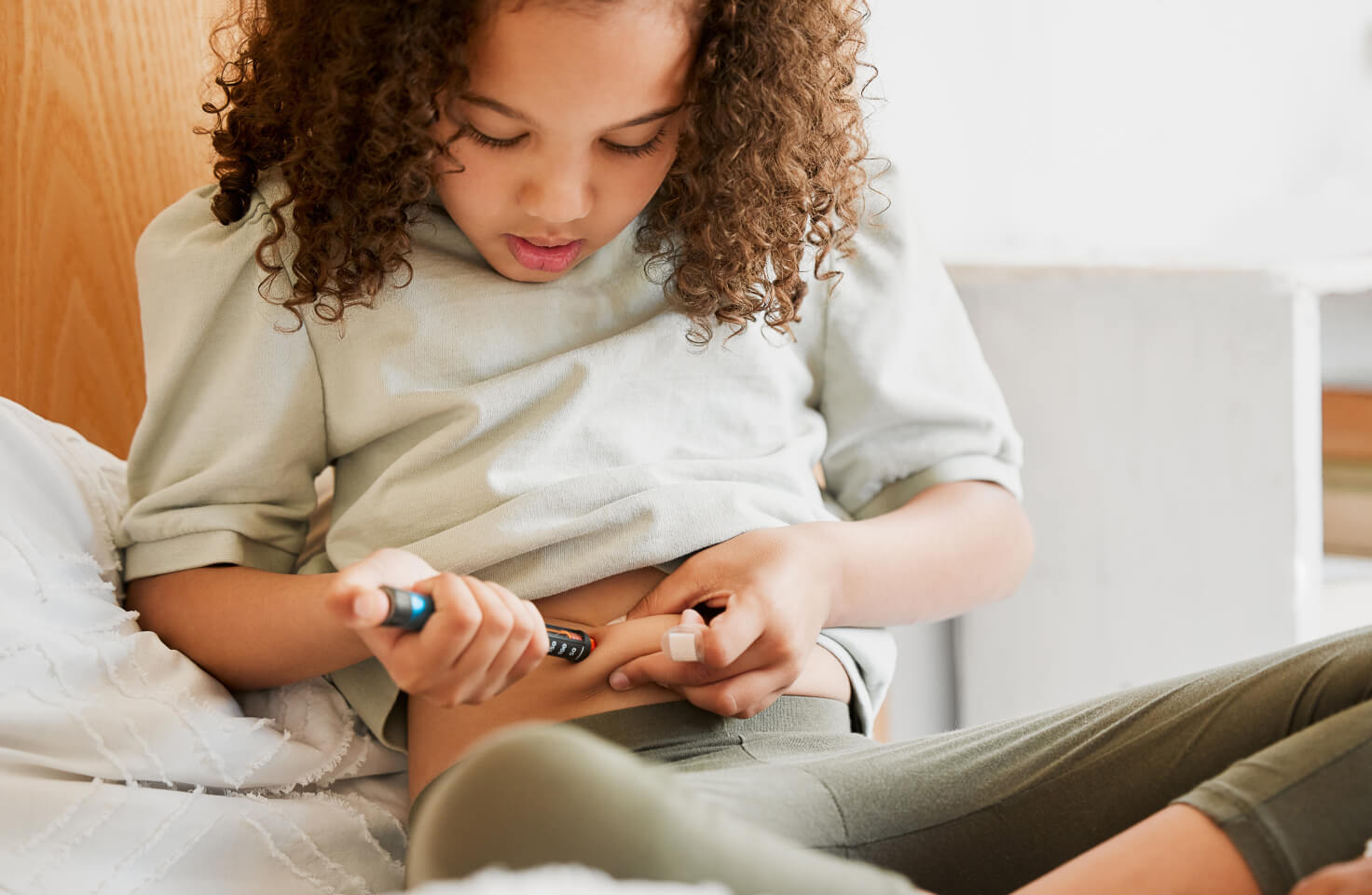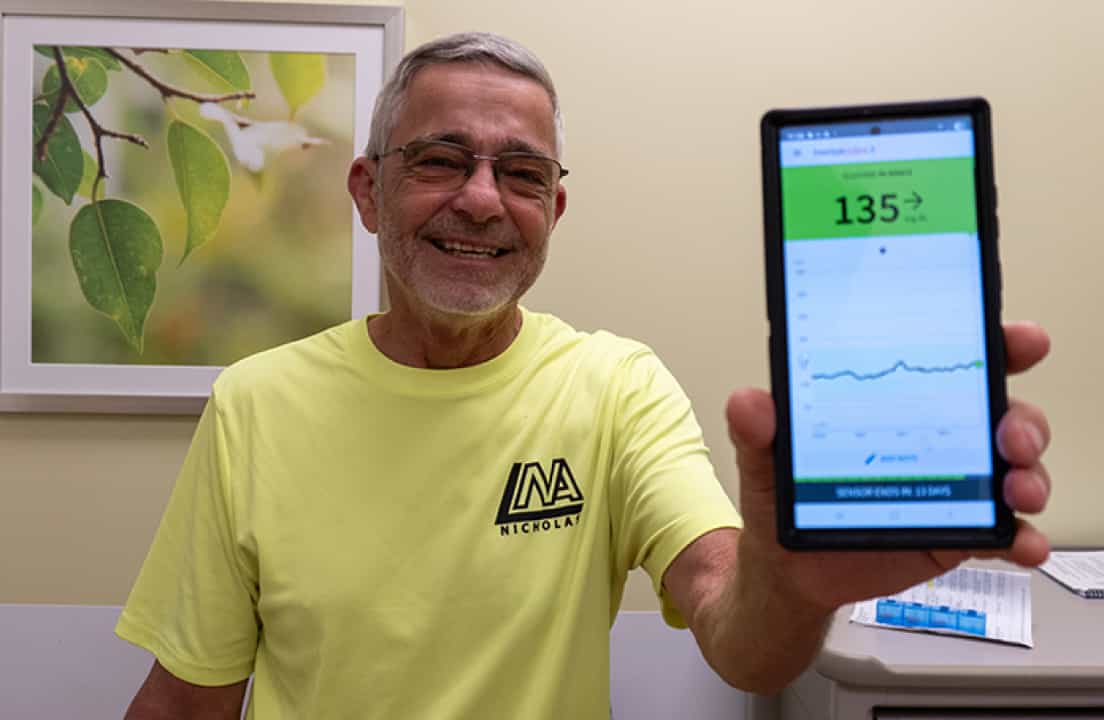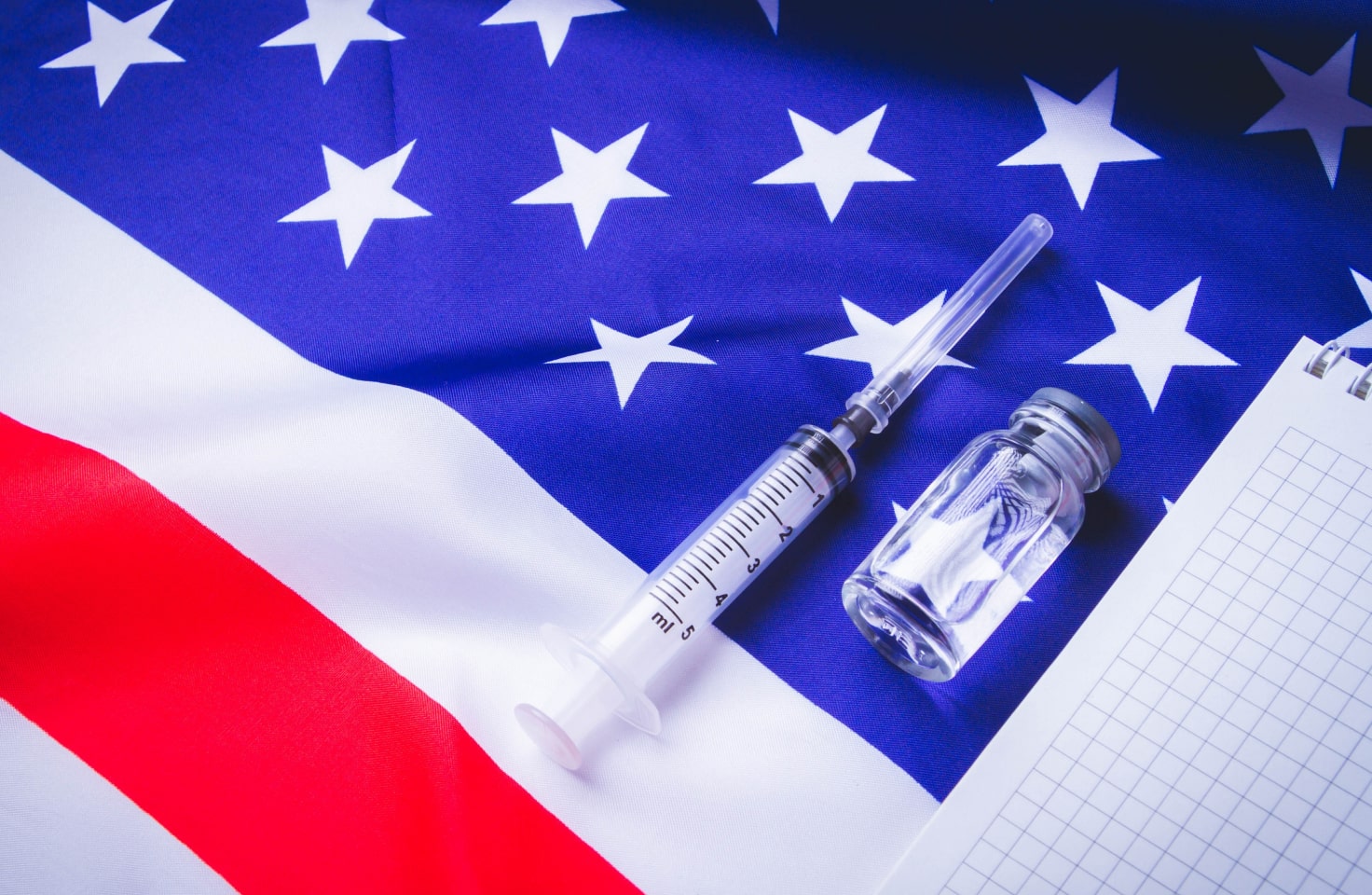T1D Guide
T1D Strong News
Personal Stories
Resources
T1D Misdiagnosis
T1D Early Detection
Research/Clinical Trials
Halloween with Type 1 Diabetes: A Parent’s Guide to Trick-or-Treating
Halloween can feel overwhelming for parents of kids with type 1 diabetes (T1D). Candy, late nights, and excitement all affect blood sugar levels. But with preparation and perspective, kids with T1D can enjoy the holiday just like their friends.

Understanding the Halloween Challenge
Halloween isn’t just about candy. It’s about everything that happens around it — long walks through the neighborhood, running from house to house, laughing with friends, staying up late, and yes, eating candy in ways parents of kiddos with type 1 diabetes (T1D) don’t usually encourage.
For a child with T1D, this involves several moving parts:
- Sugar: Fast-acting sugars in some Halloween candy can cause rapid rises in blood glucose levels.
- Excitement: Adrenaline (and sometimes nerves) can raise blood sugar levels.
- Activity: Walking around the neighborhood for an hour or two can be a great form of exercise, but it may cause low blood sugar levels, especially when your kiddos are out and about or even hours later.
Parents often feel like they’re juggling all these factors at once. Kids, on the other hand, usually just want to dress up, run around, and dig into their candy without a second thought. That’s where the challenge lies: how do we keep kids safe while still allowing them to enjoy the childhood experience they deserve?
T1D shouldn’t hold them back!
Planning Ahead: Setting Expectations
The best defense against Halloween chaos is a well-planned diabetes management strategy. And that starts before October 31st. It’s essential to discuss this openly with your child.
Open the conversation early. Let your child know that candy isn’t off-limits, but there may be limits to how and when it’s eaten. For some families, that looks like agreeing on a set number of pieces for Halloween night and saving the rest for later. For others, it might mean trading candy for toys or non-food treats.
The key is giving kids a voice in the decision. Instead of presenting a rule, offer choices:
- Swaps: “Do you want to pick five pieces for tonight and save the rest for tomorrow, or trade some for a small toy?”
- Timing: “Would you rather use some candy for treating lows later, or have a piece with lunch tomorrow?”
When kids feel like they’re part of the plan, it doesn’t feel restrictive; it feels fair.
Managing Candy and Blood Sugar Without Fear
Candy doesn’t have to be an enemy in the world of type 1 diabetes. It simply requires strategy, and timing is crucial.
Candy eaten on an empty stomach will hit harder and faster than candy paired with a balanced meal. Encourage your child to save their first pieces for after dinner, when protein and fat can help soften blood sugar spikes.
This approach also reinforces the idea that candy isn’t “forbidden,” it’s just part of the bigger picture of carb counting and timing. Make candy work for you!
Not all candy is created equal. Some types can actually be helpful in diabetes management:
- Fast-acting candies: Smarties, Skittles, or Starburst help treat lows. Toss a few in your child’s diabetes bag and you’ll always have a fun option on hand.
- Slower-digesting favorites: Chocolate bars can be included as part of meals or spread out as snacks throughout the week.
By reframing candy as both a tool and a treat, you can remove the fear factor and replace it with a practical approach.

The Emotional Side: Letting Kids Be Kids
It’s easy to focus on the numbers, insulin doses, and the “what ifs.” But remember: kids only get a few Halloweens. For them, the night isn’t about perfect blood sugars. It’s about dressing up as Elsa, Spider-Man, or a glow-in-the-dark skeleton and running through the cool fall air with their friends.
Restricting too much, saying no to candy completely, or making Halloween feel like a medical checkup can backfire. Kids might sneak candy, feel guilty about eating it, or associate diabetes with missing out. These patterns can lead to unhealthy relationships with food or socialization later in life.
One night of candy won’t undo all the hard work you and your child have done for diabetes management. Halloween night is a moment, not a habit. The ultimate goal is for your child to feel included, confident, and able to enjoy life while managing their condition.

Safety Tips for Trick-or-Treat Night
Next, it’s time to think about logistics. A few safety steps can make the night smoother for everyone:
- Check blood sugars before heading out: Knowing where your child is starting can give you peace of mind.
- Carry low supplies: Fast-acting glucose, a few favorite candies, or even a juice box should always be on hand.
- Pack the essentials: CGM, meter, insulin, water, extra strips, and a flashlight.
- Dress smart: If it’s chilly, layer up. Remember, the shivers from being cold can feel like low blood sugar.
- Stick together: Younger kids should trick-or-treat in groups with parents nearby. Older kids can check in by phone or text.
A bit of preparation can lead to fewer surprises, allowing everyone to enjoy Halloween with less focus on diabetes management. Having a plan can help your child feel normal and less preoccupied with diabetes on this festive occasion.
Alternatives and Fun Traditions
Not every Halloween memory has to focus on candy. In fact, creating traditions that extend beyond sweets can make the holiday even more special and diminish the connection between food and rewards.
Candy swaps
Trade excess candy for non-food treats, such as stickers, glow sticks, or small toys.

The Switch Witch
Encourage kids to leave their Halloween candy out overnight, and in the morning, somebody will “magically” replace it with a small gift. You can create the "Switch Witch" for Halloween, similar to how Santa Claus is celebrated at Christmas or the Easter Bunny at Easter. This tradition can be a fun one that your kids might pass down to their own children!
Trade with siblings
Kiddos with T1D may also trade candies with their siblings to get more fun low-blood-sugar snacks for their diabetes pack and give up some slow-digesting candies that can make diabetes management more challenging.
Family focus
Spend more time on costumes, pumpkin carving, decorating, or watching a Halloween movie together.
By creating enjoyable traditions, you shift the focus from “what kids can’t have” to “what makes our family’s Halloween special.” Concentrate on the “can-dos!”
Halloween Is Still for Them
Children with T1D can and should enjoy Halloween! With proper preparation, open communication, and a flexible mindset, parents can allow their kids to participate in the fun without unnecessary stress. Trick-or-treating isn't about achieving perfection; it's about creating memories and letting kids be kids.








.webp)
.jpg)
.jpeg)
.jpg)




.webp)
.jpg)


.jpg)



.jpg)

.jpg)



.jpg)

.jpg)




.jpg)
.jpg)
.jpg)
.jpg)
.jpg)
.jpg)
.jpg)

.jpg)
.jpg)

.jpg)



.jpg)
.jpg)
.jpg)

.jpg)

.jpg)














.jpg)


.jpg)







.webp)











.webp)
























.webp)